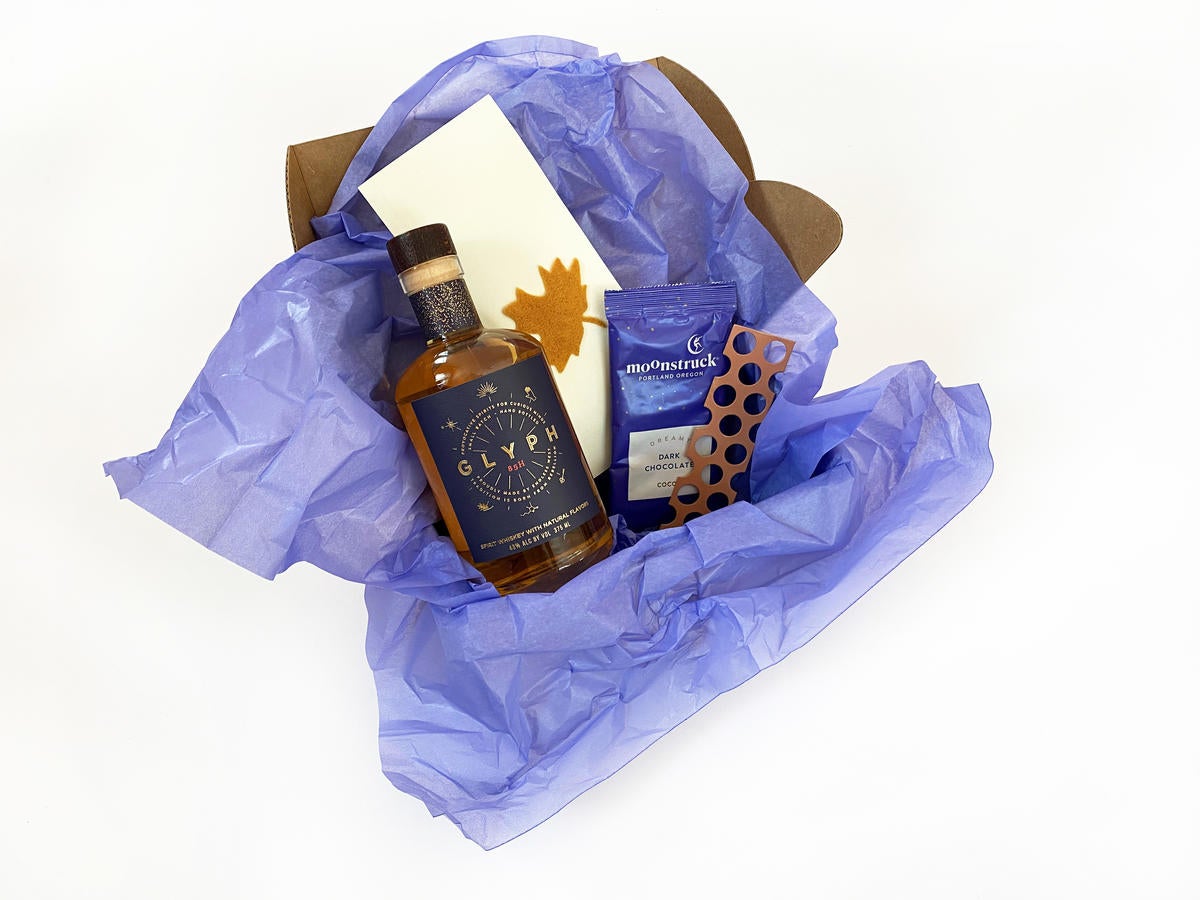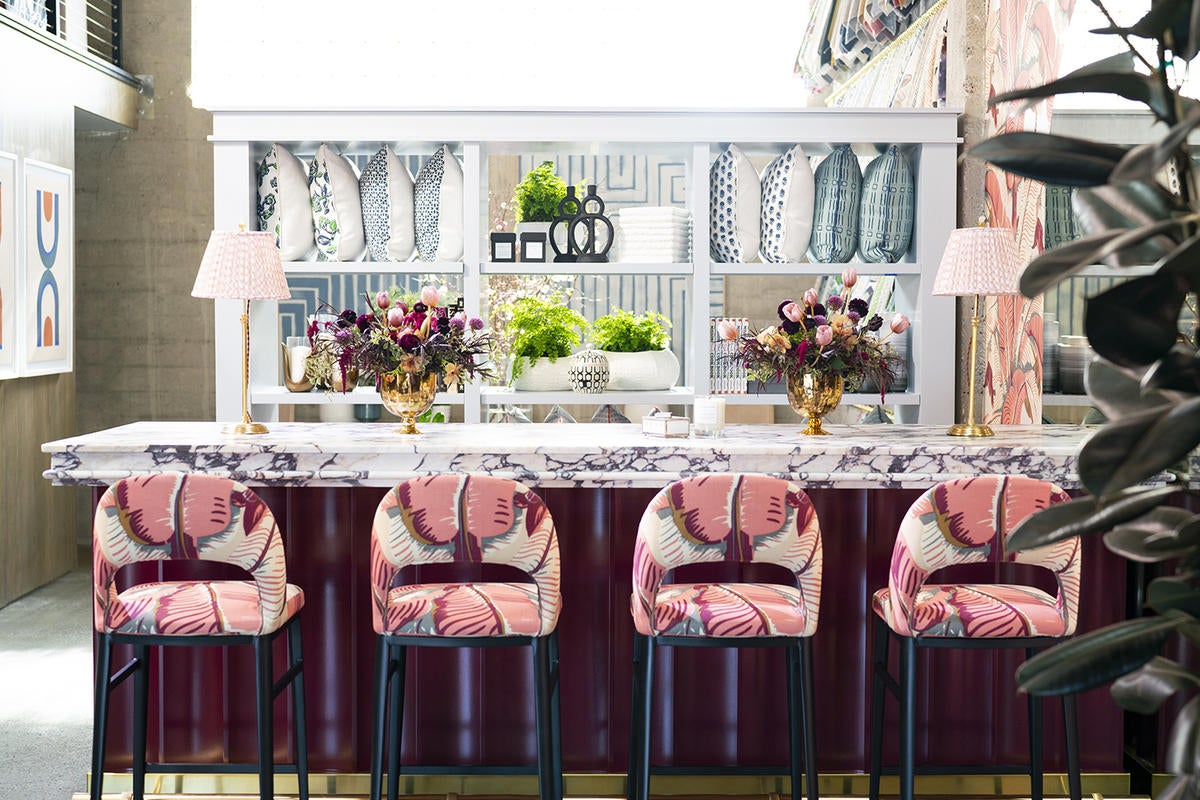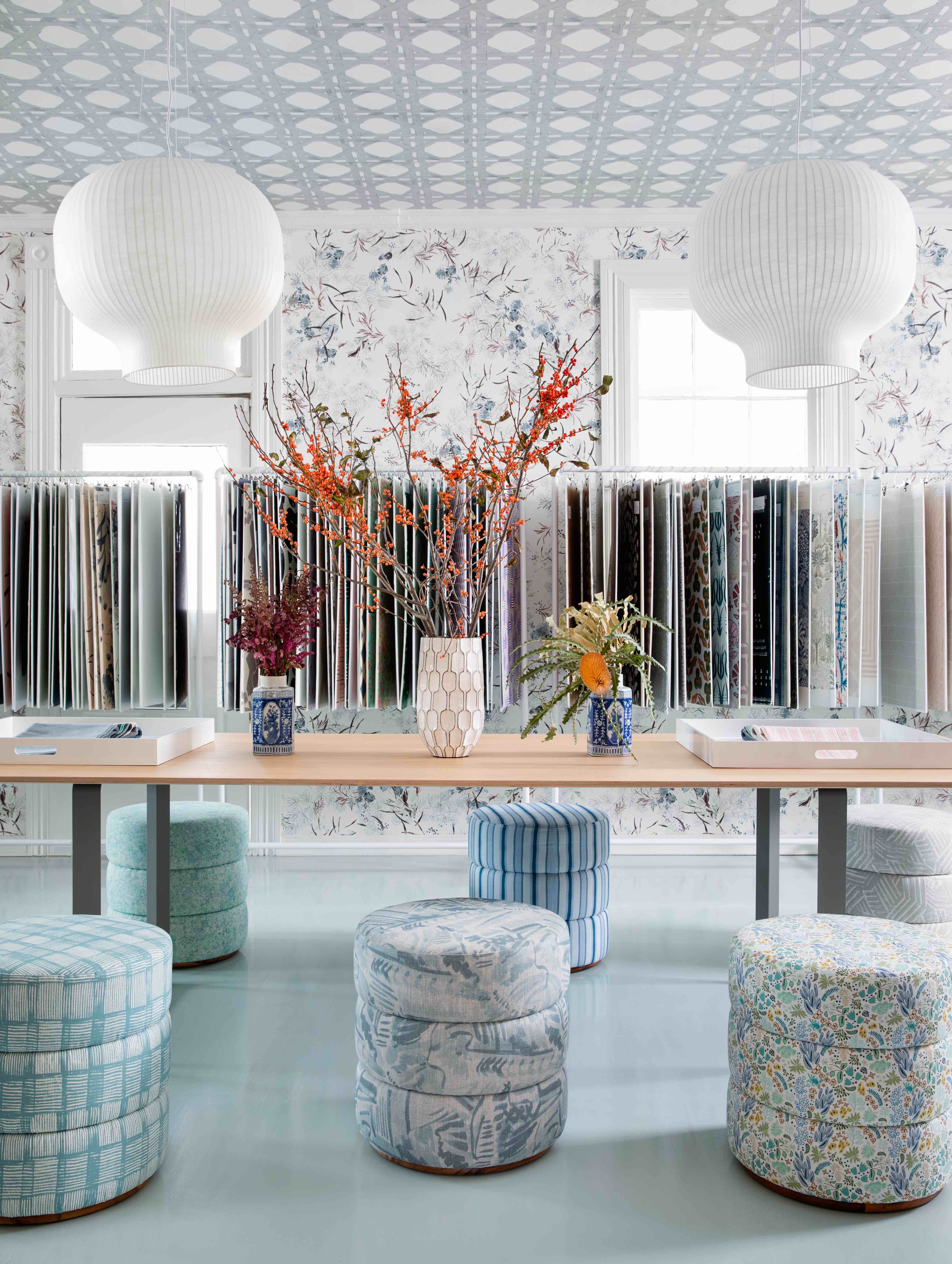The multiline showroom hasn’t evolved much since design centers and large-scale corporate showrooms first proliferated throughout the design industry decades ago. Until the internet infiltrated the design trade, there wasn’t much of a reason for it to change. Now, as a generation of digitally native designers comes of age—and the pandemic adds a sense of urgency to the mix—a new crop of entrepreneurs are looking for a way to freshen up the multiline model. Their goal isn’t to reinvent the wheel, per se, but to forge more efficient, personal and experiential exchanges within the spaces.
“I think we need the traditional showroom, and it’s always going to be there,” says Brittney Forrister, founder of Nashville, Tennessee–based multiline The Lot. “I really respect that model. What I am trying to do, though, is give a little more exposure to brands that are either new or smaller—in a way that reaches cities that don’t necessarily have that traditional model showroom.” Forrister’s fabric showroom is actually a van that she has been driving around the Southeast for the past year, clocking 30,000 miles in 2020. The idea for a roving operation struck her after nearly two years running designer Sarah Bartholomew’s retail shop and showroom.
“[Bartholomew] had said there was a need for a micro-batch showroom with boutique textiles,” says Forrister. “There’s a constant conversation [around] the showroom model changing, and it’s not so much that showrooms need to change, but you have outlying cities like Nashville, Birmingham and Charlotte, with growing design aesthetics—but they’re four hours away from a [design center].” While many designers are able to visit design centers regularly, still more rely on trade shows and periodic travel to see new product. But since the pandemic, that freedom has been stifled. Forrister’s solution? Hit the road.


“I got a fold-up table, some bamboo chairs, and began pulling up in designers’ parking lots and presenting fabric that way,” says Forrister. She applied that same personable attitude to other touch points: For designers who were memo-sampling through her website, she tied each bundle of samples with a vintage ribbon. “There isn’t anything that goes to the mailbox where we haven’t tried to make it feel special,” says Forrister.
In Los Angeles, Emma Holland Denvir of Denvir Enterprises has also been experimenting with a personalized approach. She sends out monthly Birchbox-esque packages to designers and firms to expose clients to her vendors, each one with a gift object that showcases a given material—eye pillows from knit soft goods manufacturer Bläanks, or perforated steel bookmarks from RAD Furniture. “We wanted to provide a distraction that made people a little bit happier when it was hard to find moments of joy, but we [also] wanted an effective marketing tool, not just to keep us top of mind, but to introduce a brand, product or material,” she tells Business of Home.
Holland Denvir officially launched the digitally native showroom last July, reluctantly letting it fall under the label of “multiline.” Having spent several years on the other side of the equation—first as a woodworker and furniture designer, then at the helm of U.S. business development for Swedish design studio Hem—she has experienced firsthand the ways that vendors can get lost in the hubbub of larger showrooms.
“When I left Hem, I wasn’t planning on doing a multiline,” she says. “I loved feeling really passionate about one brand, and since I had been on the client side, I hadn’t felt that same passion from multiline reps typically. Brands didn’t necessarily coexist—they felt disconnected but just happened to be represented by the same showroom. [After Denvir Enterprises launched], everyone kept calling me a multiline, and I was like, ‘Please stop calling me that. I don’t like that word. It doesn’t evoke anything positive to me.’”

A similar sentiment drove Anderson Somerselle to launch his digital showroom in the New York tri-state area. Somerselle spent more than five years working in traditional showrooms with the likes of Holland & Sherry and John Rosselli & Associates. It wasn’t long before he identified a number of designer pain points. “I could tell there was a shift in the way interior designers are working today, and the multiline showroom as it stood didn’t lend to that,” he says. “If a designer needed to know the net price of something or if it was in stock, they had to reach out to their rep in the showroom and hope that their rep got back to them in time.”
In response, Somerselle debuted his digital showroom on January 1, featuring 14 fabric and wallcovering lines, with clearly stated product details—from stock availability and pricing to minimum order requirements and lead times—all run through Shopify. “The stock component is the most challenging part because everyone manages their stock in a different system,” he says. “We’ll let [designers] know when something is in stock because everyone’s inventory feeds into our back-end system.” Not only does the Somerselle showroom streamline and provide that information around the clock, but it brings it to designers where they are—online.
The instant, anytime-anywhere appeal of a virtual showroom is hard to pass up—which is why Austin, Texas–based brand Supply invested several months into bringing their sampling service to the website. “Two years ago, we put all memo sampling online, and we were among the first to do so,” says co-founder Callie Jenschke. “It’s exploded since COVID. We’ve seen our customer base double in the last year because of the website.”
Jenschke launched Supply in 2014 with a focus on artisanal textile lines. The showroom itself is decked in patterns and colors, with its various lines unified by a bright aesthetic. Behind the rows of pretty samples, though, is a robust memo system that has further grown to bring a personalized touch to sampling. “We’re not a Schumacher or Kravet with endless memos to hand out,” says Jenschke. “We’re very conscious of how much our vendors have to spend on that, but at the same time, our sales staff will send inspo decks to the memo department, [who will] curate a box based on the project.”
The personal touch that showrooms like Supply and Denvir Enterprises bring to their design clients is fortified by their keen awareness of how Prime shipping has indelibly changed consumer expectations. “The Amazon mentality has changed the world,” says Jenschke. “Everyone expects two-day direct shipping.” For Supply, lightning-fast sample fulfillment has become a keystone of its customer service—designers in Texas metro areas can expect sales reps to hand-deliver memos on the same day, and with an ironclad shipping department, the showroom’s newly broadened out-of-state client base swiftly receives their samples, too. At Somerselle, every shipment has a tracking number, and clients can expect email updates everytime the package changes hands. “Tracking was my number-one thing,” he says. “This is where Shopify comes in—they have great negotiating power with UPS and USPS and we reap the benefits.”
For all the expanding digital capabilities of these new showrooms, a physical space to go, see, touch and feel is still an enticing proposition—one that Nancy Evars is investing in. A designer for 15 years, Evars has a firm based far enough south of San Francisco that weeknight showroom events in the city are unrealistic to drive to. That fact combined with her own line of upholstered furniture and an itch for a local design hub led her to launch Evars Collective on the San Francisco Peninsula. The brick-and-mortar, to-the-trade showroom will not only serve as a destination for sourcing and inspiration, but will focus on community, incorporating a membership component with social and professional networking opportunities.

“When we can gather again, I want to provide a space exclusive to designer events and workshops,” Evars tells BOH. “The membership [will host] workshops on charging strategies, bring in outside sales reps for presentations, book events, and [offer] additional trade discounts if members reach a certain threshold of [sales].” The notion of showrooms providing community isn’t lost upon the digital showrooms, either. Not only are all these smaller-scale showrooms developing close vendor relationships, but through their eclectic takes on the multiline model, they’re cultivating a sense of brand loyalty that comes organically through customer engagement.
“The end goal is, of course, sales, but I always saw creating an authentic community as the best way to get to sales,” says Holland Denvir. “You can be super transparent about that. We’re a sales agency, our goal is to sell things, and designers’ goal is to create beautiful spaces—how can we do our jobs and also create connection?”
One thing all five showrooms have in common is their readiness to engage with social media. As smaller companies, they’re interacting with their follower base more conversationally than a corporate account might—for Denvir Enterprises, that means weekly product videos where Holland Denvir can communicate the touch and feel of a product; Forrister generates excitement for The Lot’s brands by assembling mood boards of fabric samples; and Supply uses its Instagram grid as a place to inspire designers (and funnel them to the website).
“The beauty of social media is that it’s social—having a conversation with the people that have chosen to follow you,” says Somerselle. “I always say, ‘Stop talking at the people; let’s talk with them.’ Social media, used correctly, can educate designers.” For Holland Denvir, social media is a way to have a dialogue with her target demographic. “The multiline [model] doesn’t cater to the people who are actually specifying this furniture, who are typically younger because it’s a more entry-level, midlevel start to this industry,” she says. Her approach is helping her forge that connection—not necessarily with the designer whose name is on the door, but with the junior designers on their team who do the bulk of the specifying.
Making multilines an exciting place to source product is the name of the game for these new showrooms. “It’s an aspirational visit where [designers] are coming in to see this world that we’ve curated,” says Jenschke. “[Supply’s] web abilities will keep growing, maybe even adding an app to make things easier—digital is only getting bigger.” And these young trailblazers are at ease continuing to break the multiline mold. “I’ve always been comfortable doing things that weren’t expected, and because I [don’t] come from this part of the industry, I didn’t realize I was breaking any rules, which made it easier to break them,” Jenschke adds. These new showrooms aren’t about sacrificing process for style—but the storytelling and personalities behind them certainly feel different. And that’s the goal.
Homepage image: Inside the Supply showroom in Austin, Texas | Courtesy of Supply





























